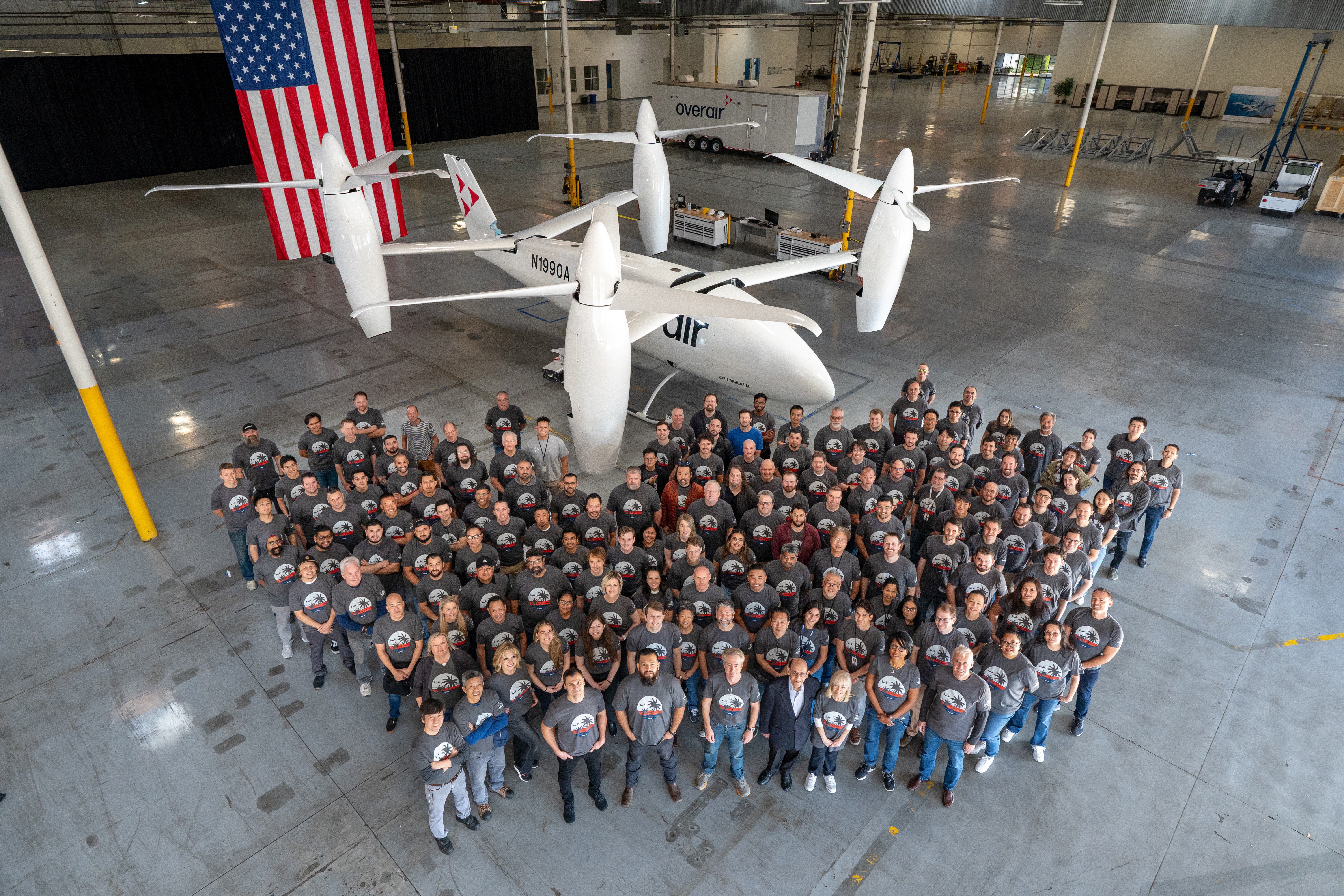Click Here to View This Page on Production Frontend
Click Here to Export Node Content
Click Here to View Printer-Friendly Version (Raw Backend)
Note: front-end display has links to styled print versions.
Content Node ID: 420265
Overair has completed assembly of the first full-scale prototype of its Butterfly eVTOL aircraft and says it will be ready to start flight testing early in 2024. Announcing the program milestone on Tuesday, the company said the flight testing of the tiltrotor model will validate the proprietary Optimum Speed Tilt Rotor (OSTR) and Individual Blade Control (IBC) technology it says will give its vehicle an edge in terms of performance, reliability and low noise levels.
Final assembly of the first Butterfly prototype has been conducted at Overair’s headquarters in Santa Ana, California. Its engineering team has begun vehicle-level ground testing at that location before moving the aircraft to its flight test facility just over 80 miles away in Victorville.
In the second quarter of 2022, Overair completed ground testing of a full-scale propulsion system on a truck. It says this approach has allowed it to expedite the development of the prototype as it aims to complete FAA type certification to allow for entry into service in 2028. Results from initial flight testing will be used to validate Overair’s technology and design principles with learnings
The Butterfly features four oversized rotors that Overair says are more than twice the size of those used by other eVTOL aircraft. It says the design has fewer moving parts than other tiltorotors and no single point of failure.
The OSTR technology adjusts the propeller revolutions per minute to boost energy efficiency in the vertical, transition, and forward phases of flight, reducing power demand for hovering by 60 percent. The IBC technology reduces vibration and propeller loads, which the manufacturer says will improve safety, while also delivering a smoother ride and lower maintenance costs.
“Since day one, Overair has been committed to developing an aircraft that extends efficient air transportation to a broader audience; an aircraft that will be welcomed by local communities, passengers, and operators alike,” said Valerie Manning, Overair’s chief commercial officer. “Our prototype is where we begin real-world, full-scale validation of these fundamental design principles.”
More Partners Could Join eVTOL Program
Overair built the first prototype aircraft almost entirely in-house with composite materials for the fuselage provided by Toray. As the program progresses, it expects to expand its cohort of partners and suppliers and has started to issue requests for information and proposals to systems manufacturers.
The all-electric Butterfly will carry five passengers on flights of up to 100 miles at speeds of 200 mph. It is expected to have noise levels that do not exceed 55 dBA.
South Korean government-backed Hanwha Systems is a major investor and partner in Overair, which spun off from Karem Aircraft in 2020 and first revealed plans for the Butterfly in 2021. In October, HeliKorea signed a letter of intent for 20 of the Butterfly, and helicopter operator Bristow has also expressed an interest in operating the aircraft.
Earlier this year, Overair announced several partnerships aimed at preparing the way for the launch of eVTOL air services. These included Jeju Island in South Korea and Dallas Fort-Worth Airport and the city of Arlington in Texas.
U.S. Navy Looks to Tap New Tiltrotor Technology
Last week, the U.S. Navy awarded Overair a small business innovative research (SBIR) contract to further develop the IBC technology. It has asked the company to advance plans to apply the system for possible military applications, focusing imparticular on safety-critical architecture.
“The list of potential benefits derived from the IBC technology is long, but the challenges of practical implementation have, to date, prevented its adoption in into production rotorcraft,” said Matt Rhinehart, an aeromechanics senior engineer with the Naval Air Systems Command. “This SBIR is intended to help move the needle towards the realization of IBC in the next generation of rotorcraft.”
The research and technology contract, which has an undisclosed value, is intended to make future military rotorcraft more damage resistant and reliable in combat. The Navy has shown interest in the trajectory-based control system that is used to communicate instructions to the IBC actuators on how they control the propeller blades, as well as its fault-tolerant, multi-channel digital communications system. According to Overair, the control system reduces susceptibility to electrical noise, and reduces loads and vibrations.
